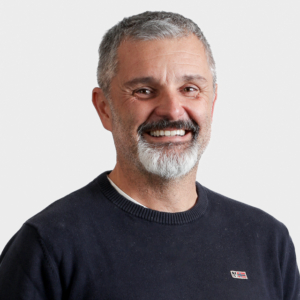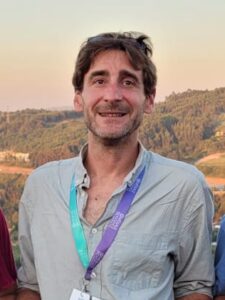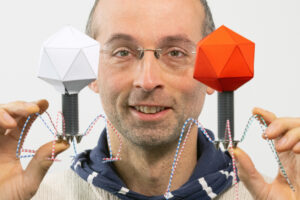New insights on the biogenesis of Coxiella replicative niches revealed by lipid profilig
Coxiella burnetii, the causal agent of the Q fever, is an obligate intracellular pathogen that replicates within host cells. This lifestyle relies on the formation of Coxiella-containing vacuoles (CCVs), specialized vacuoles that provide a shielded environment for bacterial replication, enabling C. burnetii to evade host immune defences and establish persistent infections. CCV development hinges on bacterial effector proteins translocated into host cells through a Type 4 Secretion System (T4SS), which interact with host proteins to subvert membrane trafficking. Expanding on the earlier identification of CvpB as a C. burnetii Lipid-Interacting Effector (LIE) that manipulates PI(3)P metabolism, we have conducted further investigations into the lipid composition of CCVs. Use of lipid binding probes revealed that PI(3)P, PI(4)P and LBPA were actively enriched at the CCV by T4SS effectors. We have identified the effector Vice as an additional LIE responsible for LPBA enrichment at the CCV. Vice interacts with phosphoinositides and late endosomal membranes, enriched in phosphatidylserine (PS) and lysobisphosphatidic acid (LBPA). CCVs generated by the vice::Tn mutants are negative for LBPA, showed a strong defect in size and an altered morphology as compared to wt CCVs. Strikingly, ectopic expression of Vice in eukaryotic cells leads to the formation of compartments reminiscent of early CCVs in both morphology, protein and lipid composition. The biogenesis of these Vice-induced compartments (VICs) is driven by an intriguing dual role of Vice. Initially, the effector localizes at the plasma membrane of eukaryotic cells, triggering the internalization of large vacuoles through the induction of macropinocytosis. Subsequently, Vice stabilizes VICs by disrupting the ESCRT machinery, impeding the formation of intraluminal vesicles (ILVs), with consequences on the release of extracellular vesicles (EVs). Taken together, our findings highlight Vice as a pivotal C. burnetii effector capable of exploiting two major cellular pathways to shape the bacterial replicative environment.
Short bio
Matteo Bonazzi is a cell biologist originally from Bologna, Italy. In 2005 he obtained a PhD in Cell Biology from the Open University in London for his work carried out at the Consorzio Mario Negri Sud, in Italy, on intracellular membrane trafficking. In 2005 he moved to the Pasteur Institute in Paris as a postdoc in Pascale Cossart laboratory to study the role of clathrin-mediated endocytosis in bacterial internalization by infected cells. In 2011 he moved to the Institut de Recherche en Infectiologie de Montpellier (IRIM) to set up his independent team with the support of the ATIP/Avenir programme. There, he investigates how stealth bacterial pathogens use effector proteins to escape or control the innate immune response during infections. Recent work from his team highlighted an important role of host lipids in the biogenesis of intracellular bacterial replicative niches. Since 2023 he is the Director of IRIM.
Laboratory of the speaker
Institut de Recherche en Infectiologie de Montpellier (IRIM)
Invited by
Cristel Archambaud




